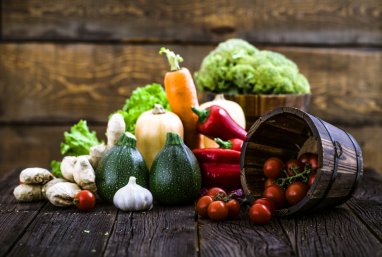You’ve just been diagnosed with chronic kidney disease and you are not sure what you can eat in the future. Here’s a quick blog to get you started with your new menu plan.Be sure to ask Dr. Gura to help you with your diet and you may wish to hire a dietician to make your meal choices more interesting. It’s easy to get stuck in a rut, eating the same things, because they’re safe.
- Limit your fluids
- Eat a low-protein diet
- Limit salt, potassium, phosphorous , and other electrolytes
And you need to make sure that you are getting enough calories so you don’t lose too much weight.
The purpose of this diet it to keep the levels of electrolytes, minerals and fluid in your body balanced when you have chronic kidney disease or on dialysis. Patients on dialysis need this special diet to limit the buildup of waste products in the body. Limiting fluids between dialysis treatments is very important because most people on dialysis urinate very little. Without urination, fluid will build up in the body and cause too much fluid in the heart, lungs, and ankles. Don’t forget that the Kidney Foundation has chapters in most states and it’s a great place for people with kidney disease and their families to find programs and information. You will need to take in enough calories each day to keep you healthy and prevent the breakdown of body tissue. Ask Dr. Gura what your ideal weight should be. Weigh yourself every morning and make sure that you are meeting the goal weight that Dr. Gura suggested.
Carbohydrates: Fruits, breads, grains, and vegetables.
These food provide energy, fiber, minerals and vitamins that your body needs. Check with Dr. Gura first, but you may be able to eat sugar, honey, and jelly. He may even suggest that you can have desserts!
Fats
Fats can be an excellent source of calories. Make sure to use monounsaturated and polyunsaturated fats (olive oil, canola oil, safflower oil) to protect your heart health. Be sure to talk to Dr. Gura about the fat intake that you will be allowed.
Protein
Low-protein diets may be helpful before you start dialysis. Dr. Gura may recommend a moderate-protein diet (1 gram of protein per kilogram of body weight per day.) One started on dialysis, you will need to eat more protein. A high-protein diet with fish, poultry, pork or eggs at every meal may be recommended by Dr. Gura. This will help you replace muscles and other tissues that you lose. People on dialysis should eat 8-10 ounces of high-protein foods each day. Dr. Gura will suggest adding egg whites, egg white powder or protein powder.
Calcium & Phosphorous
The minerals calcium and phosphorous will be checked often by Dr. Gura. You will need to limit the amount of dairy foods you eat because they contain large amounts of phosphorous. This includes milk, yogurt, and cheese. Some daily foods that are lower in phosphorous include margarine, butter, cream cheese, heavy cream, ricotta cheese, brie cheese, sherbet, and non-dairy whipped toppings. Some fruits and vegetables contain only small amounts of phosphorous, but may contain large amounts of potassium.
Fluids
In the early stages of kidney failure, you do not need to limit the fluid you drink. But, as your condition gets worse, or when you are on dialysis, you will need to watch the amount of liquid you take in. In between dialysis sessions, fluid can build up in the body. Too much fluid will lead to shortness of breath, an emergency that needs immediate medical attention. Dr. Gura and your dialysis nurse will let you know how much you should drink every day. Do not eat too much of foods that contain a lot of water, such as soups, Jell-O, Popsicles, ice cream, grapes, melons, lettuce, tomatoes, and celery. Use smaller cups or glasses and turn over your cup after you have finished it. Tips to keep from becoming thirsty include: Avoid salty foods Freeze some juice in an ice cube tray and eat it like a Popsicle (you must count these ice cubes in your daily amount of fluids) Stay cool on hot days
Salt or Sodium
Reducing sodium in your diet helps you control high blood pressure. It also keeps you from being thirsty and prevents your body from holding onto extra fluid. It is likely that you will need to cut down the sodium in your diet. Look for these words on food labels: Low-sodium, No salt added, Sodium-free, Sodium-reduced, Unsalted
Potassium
Normal blood levels of potassium help keep your heart beating steadily. However, too much potassium can build up when the kidneys no longer function well. Dangerous heart rhythms may result, which can lead to death. Potassium is found in many food groups, including fruits and vegetables. Choosing the right item from each food group can help control your potassium levels. When eating fruits: Choose peaches, grapes, pears, cherries, apples, berries, pineapple, plums, tangerines, and watermelon Limit or avoid oranges and orange juice, nectarines, Kiwis, raisins or other dried fruit, bananas, cantaloupe, honeydew, prunes, and nectarines When eating vegetables: Choose broccoli, cabbage, carrots, cauliflower, celery, cucumber, eggplant, green and wax beans, lettuce, onion, peppers, watercress, zucchini, and yellow squash
Limit or avoid asparagus, avocado, potatoes, tomatoes or tomato sauce, winter squash, pumpkin, avocado, and cooked spinach

